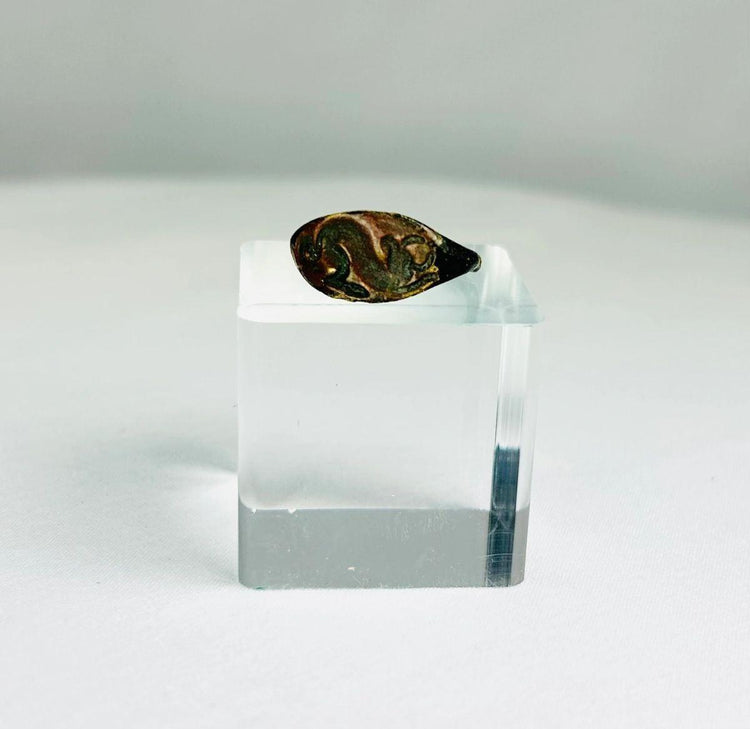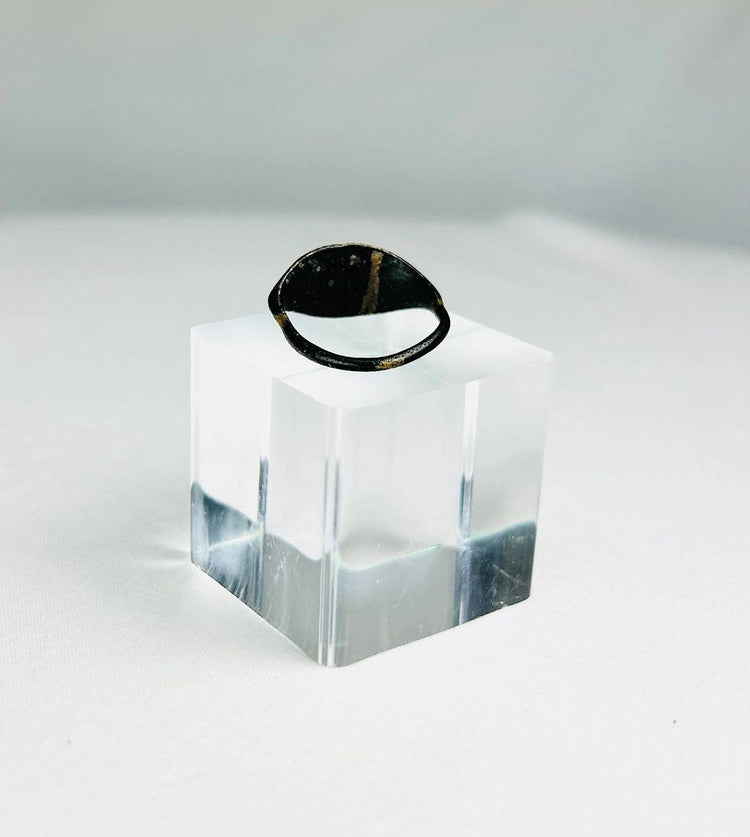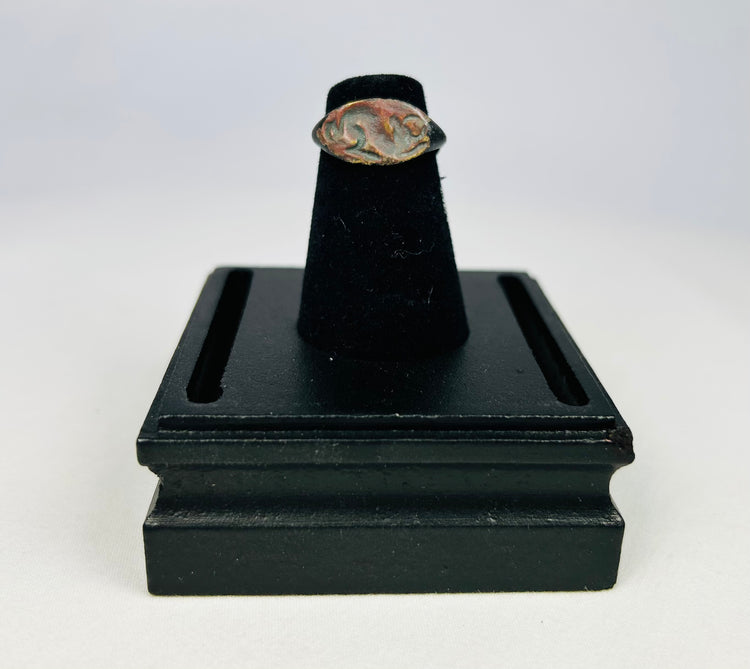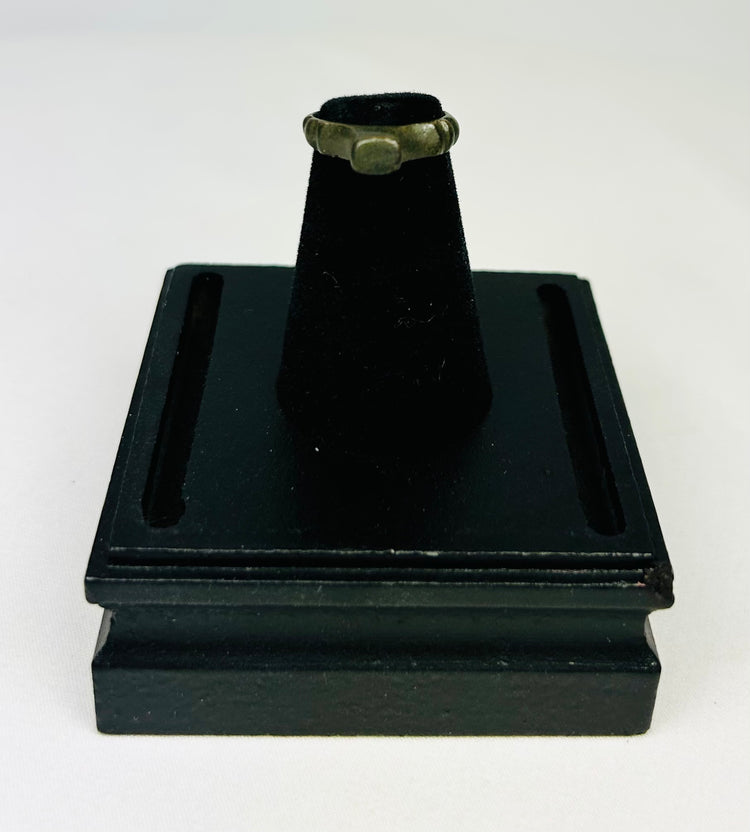Anillo de bronce antiguo con animal astado grabado | Hacia los siglos I-IV d. C.
Descripción
Más
Menos
Contexto histórico y origen
Región: Mediterráneo o Oriente Próximo
Material: Bronce
Periodo: Siglo I-IV d. C.
Descripción
Este antiguo anillo de bronce presenta un bisel ovalado grabado con la imagen de un animal con cuernos, probablemente un toro, un símbolo perdurable de fuerza, poder y fertilidad en la antigüedad. Venerado en las culturas mediterráneas y de Oriente Medio, el toro se asociaba a menudo con la prosperidad agrícola, la autoridad divina y la vitalidad masculina. El fino grabado captura tanto la maestría como el significado simbólico de los antiguos joyeros.
Características
- Bisel ovalado grabado con un toro con cuernos, que simboliza fuerza y fertilidad.
- Grabado finamente detallado que enfatiza el poder y la presencia del animal.
- Pátina verde natural desarrollada a lo largo de siglos, realzando la autenticidad.
- Se usa como adorno y como expresión simbólica de estatus y creencias.
Importancia cultural
En las antiguas sociedades mediterráneas y de Oriente Medio, los toros eran fundamentales en los mitos, los rituales y la iconografía real. Asociado con dioses, reyes y la fertilidad, el símbolo del toro encarnaba la vitalidad y la autoridad divina. Este anillo pudo haber servido no solo como joya, sino también como emblema protector o ceremonial, vinculando a su portador con la fuerza y el poder perdurable del toro.
Condición
Buen estado de conservación, con desgaste superficial y abrasiones propias de su antigüedad. La pátina le confiere a la pieza un carácter arqueológico, destacando su larga historia de uso y conservación.
Dimensiones (aproximadas)
Talla del anillo: 6 EE. UU.
Edad
Siglos I-IV d. C.
Descripción
Contexto histórico y origen
Región: Mediterráneo o Oriente Próximo
Material: Bronce
Periodo: Siglo I-IV d. C.
Descripción
Este antiguo anillo de bronce presenta un bisel ovalado grabado con la imagen de un animal con cuernos, probablemente un toro, un símbolo perdurable de fuerza, poder y fertilidad en la antigüedad. Venerado en las culturas mediterráneas y de Oriente Medio, el toro se asociaba a menudo con la prosperidad agrícola, la autoridad divina y la vitalidad masculina. El fino grabado captura tanto la maestría como el significado simbólico de los antiguos joyeros.
Características
- Bisel ovalado grabado con un toro con cuernos, que simboliza fuerza y fertilidad.
- Grabado finamente detallado que enfatiza el poder y la presencia del animal.
- Pátina verde natural desarrollada a lo largo de siglos, realzando la autenticidad.
- Se usa como adorno y como expresión simbólica de estatus y creencias.
Importancia cultural
En las antiguas sociedades mediterráneas y de Oriente Medio, los toros eran fundamentales en los mitos, los rituales y la iconografía real. Asociado con dioses, reyes y la fertilidad, el símbolo del toro encarnaba la vitalidad y la autoridad divina. Este anillo pudo haber servido no solo como joya, sino también como emblema protector o ceremonial, vinculando a su portador con la fuerza y el poder perdurable del toro.
Condición
Buen estado de conservación, con desgaste superficial y abrasiones propias de su antigüedad. La pátina le confiere a la pieza un carácter arqueológico, destacando su larga historia de uso y conservación.
Dimensiones (aproximadas)
Talla del anillo: 6 EE. UU.
Edad
Siglos I-IV d. C.
También te puede interesar





























